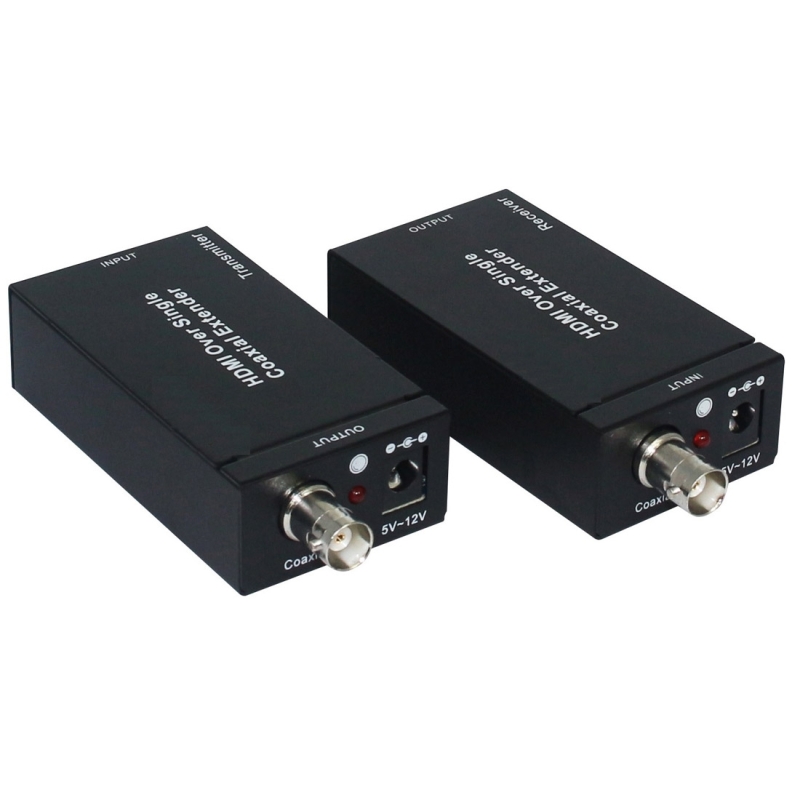

- #AUDIO OVERLOAD ON RECEIVE COAX MANUAL#
- #AUDIO OVERLOAD ON RECEIVE COAX FULL#
- #AUDIO OVERLOAD ON RECEIVE COAX SOFTWARE#
High transmitter gain can cause over modulation problems in other parts of the signal chain before the RF modulator (like an A/D) which also result in audio distortion. Wireless microphone receivers aren’t very good at recovering audio from FM signals that deviate above and below a center frequency by their pre-determined amount. When audio is fed into the microphone, the carrier moves up and down around the center, or “deviates,” according to the amplitude of the audio wave. With FM modulation, the amount of deviation around a center or “rest” frequency is proportional to the audio signal’s amplitude. Over modulation is a topic unto itself, but in short, over modulation is when the wireless carrier frequency in a frequency modulated (FM) system exceeds the maximum deviation of the system. It’s a bit counterintuitive, but setting audio gain at the transmitter too high results in an RF problem, which in turn manifests as audible distortion. The bigger concern is over modulation of RF. If audio gain at the transmitter is set too high, audio clipping and distortion will occur, but not necessarily because the audio SNR ceiling is exceeded. Transmitter gain set correctly for this particular performer to maximize SNR (-0 dB is arbitrary, the gain setting depends on the performer's volume). Transmitter gain set too high, causing overmodulation and distortion. Transmitter gain set too low for performer's volume. This pitfall should be familiar to mixers and sound engineers who carefully manage gain structure, but they may not always realize that in a wireless audio system gain management must begin at the transmitter.
#AUDIO OVERLOAD ON RECEIVE COAX FULL#
If transmitter gain is set too low, like when a performer is soft-spoken, the audio’s signal-to-noise ratio (SNR) will be low, and the full dynamic range of the system will be lost. Less expensive models do not have a “yellow” or caution zone, so it is more difficult to accurately dial in transmitter gain.
#AUDIO OVERLOAD ON RECEIVE COAX MANUAL#
Some have a more nuanced and sensitive display, like the Shure UHF-R, whose manual suggests setting transmitter gain so peaks never exceed the yellow range. Transmitter gain should be adjusted and returned to the performer iteratively until a “sweet spot” is reached where the audio meter reads well above its lowest display, but doesn’t peak.Īudio meters on microphones vary across makes and models. If the levels are low (only a few bars), turn up the gain. The audio level should jump around just underneath the peak indicator without crossing it. There are no bars on the audio meter because I am not speaking into the mic, but you can see the "OL" overload peak marking. Monitor the audio level meter on the receiver, not the RF level on the receiver. Once you’ve consulted your microphone’s manual on setting transmitter gain (keep a lookout for terminology confusion as described below), have the performer use the microphone with his or her normal speaking or singing volume.

The exact method will vary from model to model.
#AUDIO OVERLOAD ON RECEIVE COAX SOFTWARE#
On microphone models which support it, setting transmitter gain is a simple procedure performed either with a mechanical switch or knob on the transmitter or within the software interface on the beltpack/handheld or receiver. We are talking about setting gain in a stage inside the microphone itself, rather than manipulating the gain of the resulting signal at a later part in the chain. Wireless microphone handhelds and body packs combine a microphone and a radio transmitter. This type of gain is referred to as “transmitter gain” because of where the gain is applied in the signal chain: after the mic audio input and before RF modulation occurs in the transmitter. Gain staging is manually setting audio gain on a wireless microphone to the correct level. Since improper transmitter gain staging causes audio distortion and sometimes RF trouble, I think the subject is important enough to expand on here. Furlong this week in Chicago, which we had the pleasure of attending. James Stoffo touched on gain staging briefly during his presentation with T.C. We applied the highest available technologies in construction materials, Finite Element Analysis engineering and manufacturing to develop speakers that are compact and lightweight for easy installation without making any performance compromises.Gain staging wireless microphones is an important but overlooked step in getting wireless systems to sound their best. The development process covered several years and literally months of listening to each individual model to fine tune musical quality and durability. To develop this new Illusion Audio speaker line we combined our decades of experience manufacturing high-end audiophile speakers with our passion for maximum performance mobile audio. Illusion Audio Electra E4CX 4" High-Performance Coaxial Speaker Kit


 0 kommentar(er)
0 kommentar(er)
